From Giant Ground Sloths to Tiny Poops
Global tar pits reveal past ecosystems
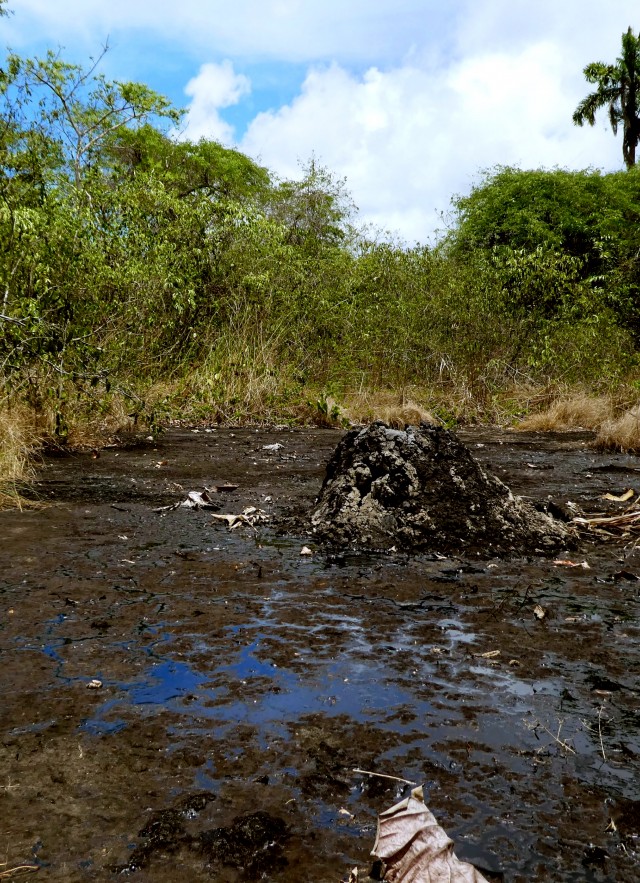
While Rancho La Brea in Los Angeles is known around the world for its thousands of saber-toothed cats and unique active excavation site, asphaltic deposits or "tar pits" are actually found in a number of countries throughout the Americas and beyond. These fossil treasure troves are uniquely valuable to scientists because they preserve many different kinds of fossils (and lots of them!). This is especially crucial in places like the neotropics, where Ice Age fossils aren’t usually found. Each site yields new discoveries and gives scientists rare insight into past ecosystems.
Researchers from La Brea Tar Pits launched The B.R.E.A.S. Project (Bridging Research and Education at Asphaltic Sites) as a unique opportunity to study asphaltic fossil assemblages in different contexts and continents, and to foster collaborations with scientists around the world. The project aims to provide student training and support to regional scientific institutions while also developing education and outreach programs for local communities.
“By partnering with institutions working at tar pits around the world, and empowering local scientists and communities to study these sites, we can discover how global change played out on multiple continents, and generate greater connections with the past, present, and future of these ecosystems we all depend on.”
Dr. Emily Lindsey, Assistant Curator and Site Director at La Brea Tar Pits
Three recent papers reveal the ways in which these rich paleontological deposits can unlock the secrets of Ice Age creatures and climates.
One review compiled findings from the past century of discovery at asphalt seeps in Trinidad. The researchers reported 68 specimens, including giant ground sloths, giant armadillo-like creatures, ancient elephant-like animals, and rodents. Based on the fossil evidence, the scientists inferred that the environment was a tropical savannah, with tall grasses and occasional trees. They also identified unexplored fossil sites and opportunities for modern ecological studies at these unusual geological phenomena.
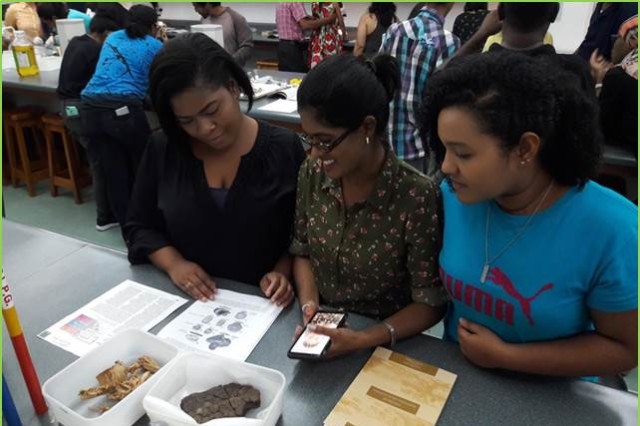
Aisling Farell
Students from the University of the West Indies at St. Augustine, Trinidad, examining undescribed fossils from Trinidad during a short course taught by Dr. Alexis Mychajliw, Postdoctoral Fellow at La Brea Tar Pits, and Collections Manager Aisling Farrell, in April 2019
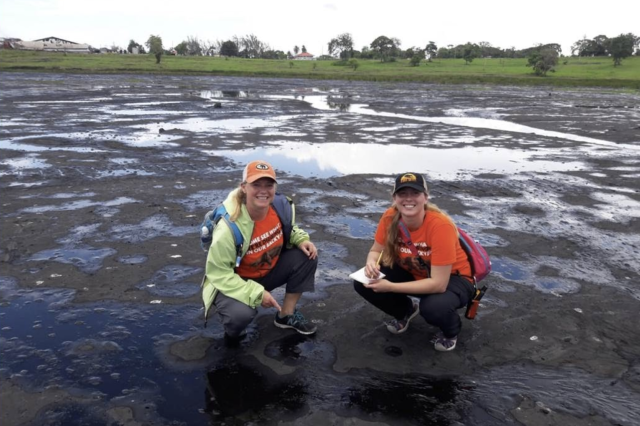
Aisling Farrell
Exploring Pitch Lake in Trinidad, the world’s largest asphalt deposit
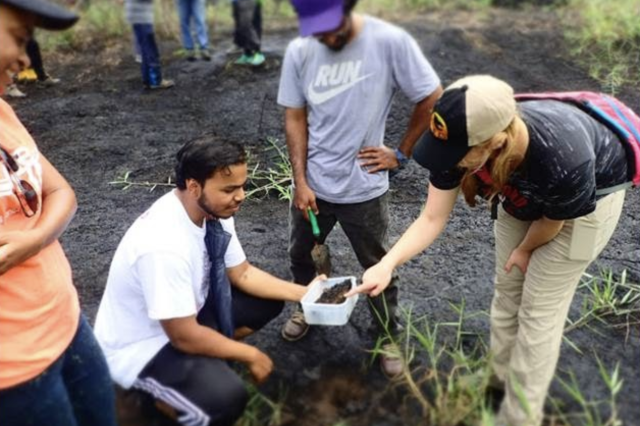
Aisling Farrell
Students onsite at asphalt seeps in Trinidad
1 of 1
Students from the University of the West Indies at St. Augustine, Trinidad, examining undescribed fossils from Trinidad during a short course taught by Dr. Alexis Mychajliw, Postdoctoral Fellow at La Brea Tar Pits, and Collections Manager Aisling Farrell, in April 2019
Aisling Farell
Exploring Pitch Lake in Trinidad, the world’s largest asphalt deposit
Aisling Farrell
Students onsite at asphalt seeps in Trinidad
Aisling Farrell
Another study examined the remains of more than 20 elephant-sized giant ground sloths and used these data to investigate their behavior. A large deposit of Eremotherium giant ground sloth bones were discovered preserved in asphaltic sediments in Ecuador. It’s a mix of adults and young, suggesting a mass die off, potentially due to illness or drought. Their large numbers and the types of sediments they were found in – which included chopped-up plant material thought to be fossil poop or stomach contents -- suggest that they were social creatures that perhaps “wallowed” in aquatic habitats like modern hippopotamuses do.
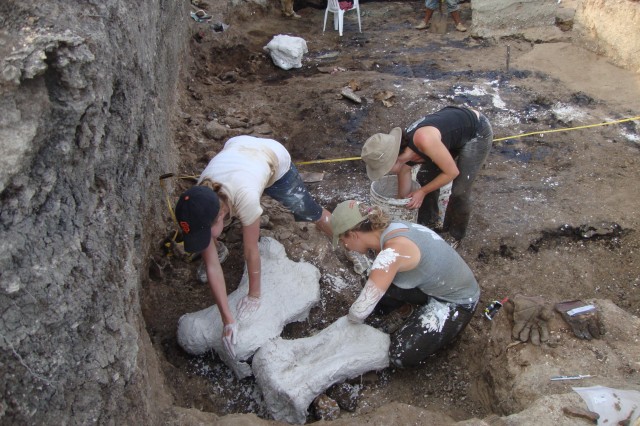
Martin Tomasz.
Students make protective plaster wrappings for asphalt-preserved giant sloth bones at the Tanque Loma tar pit locality in southwestern Ecuador.
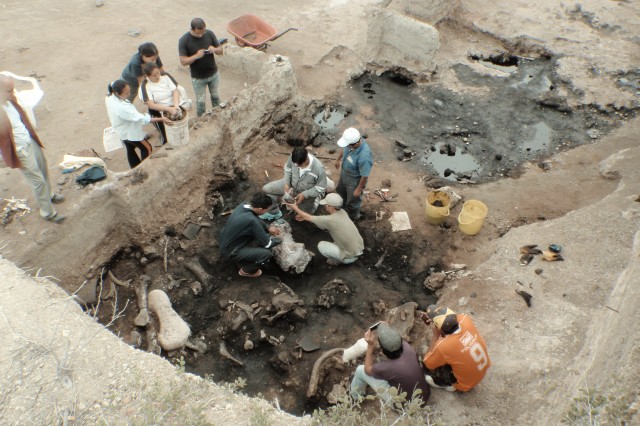
Emily Lindsey
La Brea Tar Pits Collections Manager Gary Takeuchi teaches local university students how to jacket a giant sloth skull at the Tanque Loma tar pit locality in Ecuador.
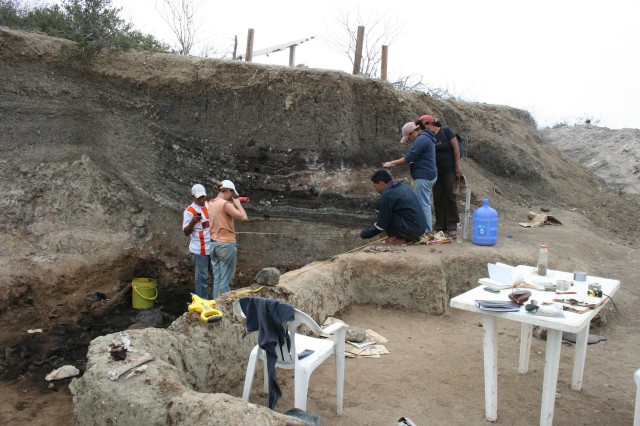
Anthony D. Barnosky
Emily Lindsey and Ecuadoran students map asphalt-preserved fossils at the Tanque Loma tar pit locality in southwest Ecuador.
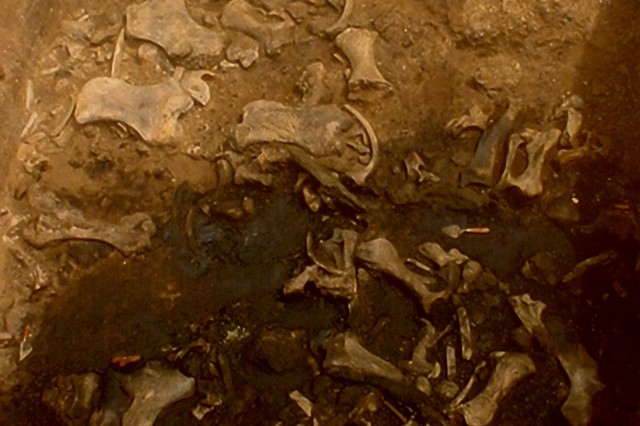
View of the bone bed at 'Tanque Loma'
1 of 1
Students make protective plaster wrappings for asphalt-preserved giant sloth bones at the Tanque Loma tar pit locality in southwestern Ecuador.
Martin Tomasz.
La Brea Tar Pits Collections Manager Gary Takeuchi teaches local university students how to jacket a giant sloth skull at the Tanque Loma tar pit locality in Ecuador.
Emily Lindsey
Emily Lindsey and Ecuadoran students map asphalt-preserved fossils at the Tanque Loma tar pit locality in southwest Ecuador.
Anthony D. Barnosky
View of the bone bed at 'Tanque Loma'
Finally, last month, scientists described the discovery of hundreds of tiny, asphalt-preserved coprolites (fossil feces) right in La Brea Tar Pits’ own backyard. The team determined that these 50,000-year-old “trace fossils” were produced by packrats (genus Neotoma), a critter whose nests provide valuable clues into past climate across the arid southwest. But no fossil Neotoma nests have ever been discovered near the coast before; the asphalt seeps at La Brea Tar Pits fortuitously preserved this one.
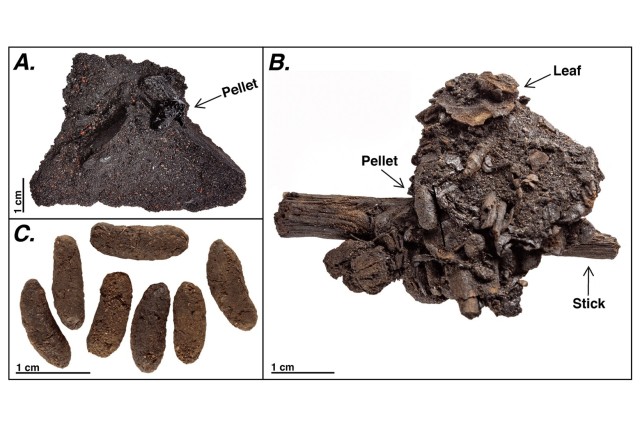
Carrie Howard
Example of Rancho La Brea coprolites from a new paper by Mychajliw, A.M., Rice, K.A., Tewksbury, L.R. et al. (A) and (B) in situ examples of bulk matrix from Project 23, with coprolites mixed in. (C) isolated coprolites sieved from cleaned matrix.
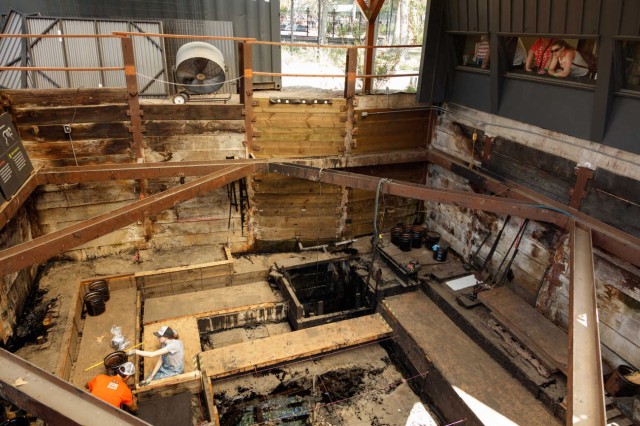
Guests watch as excavators work uncovering Ice Age fossils in the present day.
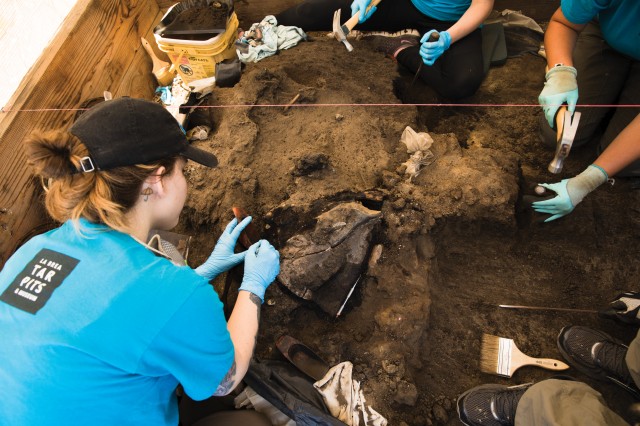
Excavators at La Brea Tar Pits painstakingly unearth the fossils of megafauna and microfossils.
1 of 1
Example of Rancho La Brea coprolites from a new paper by Mychajliw, A.M., Rice, K.A., Tewksbury, L.R. et al. (A) and (B) in situ examples of bulk matrix from Project 23, with coprolites mixed in. (C) isolated coprolites sieved from cleaned matrix.
Carrie Howard
Guests watch as excavators work uncovering Ice Age fossils in the present day.
Excavators at La Brea Tar Pits painstakingly unearth the fossils of megafauna and microfossils.
